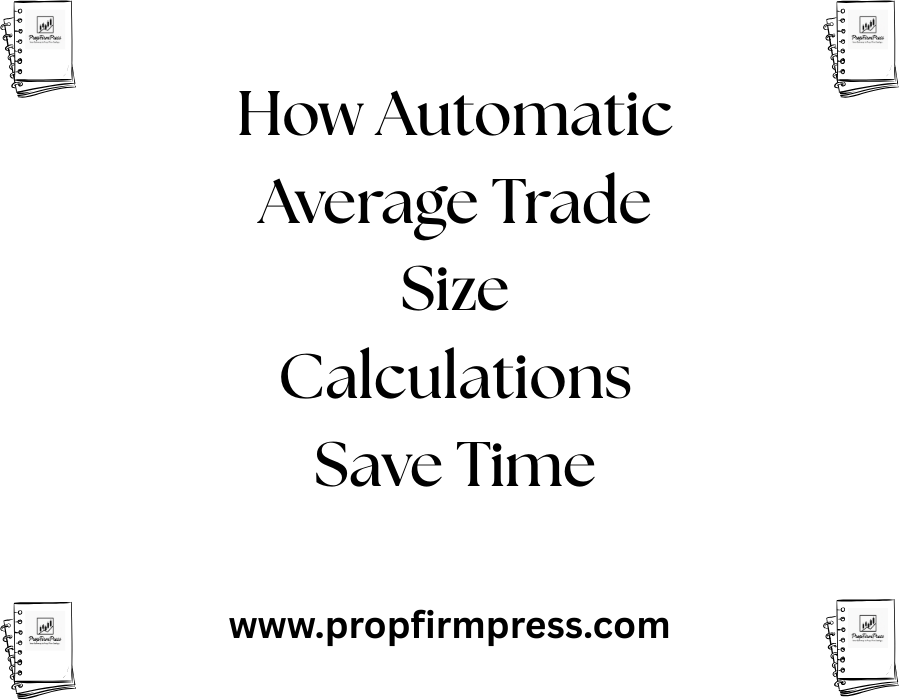How Automatic Average Trade Size Calculations Save Time
In the fast-paced world of trading, efficiency and accuracy are paramount to success. One of the critical metrics traders and analysts rely on is the average trade size, which provides essential insights into trading behavior, risk management, and performance evaluation. Traditionally, calculating average trade size involved manual data entry or using basic spreadsheet formulas, both of which consumed valuable time and left room for errors. However, with advancements in automated calculation technologies, traders can now save significant amounts of time by leveraging automated average trade size calculations.
This article explores how automatic average trade size calculations streamline operations, improve precision, and ultimately free up traders’ time to focus on strategy and decision-making.
Enhanced Efficiency with Automated Metrics
Calculating average trade size manually can be tedious and prone to mistakes, especially when handling large datasets. Automation removes the manual effort by using algorithms to instantly analyze trade records and compute averages based on predefined criteria. This automation reduces the time spent on spreadsheet formulas or manual calculations, allowing traders to obtain accurate average trade sizes in real-time.
By automating these calculations, traders avoid repetitive tasks and the risk of overlooking trades or miscalculating figures. The enhanced efficiency enables quicker data processing, making it possible to respond faster to market changes or review performance with up-to-date insights.
Error Reduction and Increased Accuracy
Errors in calculating trade metrics can lead to flawed analysis and misguided trading decisions. Manual calculations, particularly when involving many trades, increase the likelihood of data entry mistakes or incorrect formula application. Automation tools, programmed to precisely follow calculation logic, eliminate these human errors.
Automatic average trade size calculations ensure that every trade is accounted for and that mathematical operations are performed accurately across large datasets. This consistency is crucial for traders relying on accurate metrics to adjust position sizing, refine strategies, or meet compliance standards.
Seamless Integration with Trading Platforms and Tools
Modern trading platforms and portfolio management software increasingly incorporate automated calculation features. Average trade size calculators can be integrated seamlessly into these platforms, providing instant visibility into trading metrics without switching between multiple applications or manual inputs.
This integration enhances workflow by consolidating trade analysis into a single system that updates dynamically with every new trade executed. Traders no longer need to export data into external tools for calculation, saving time and reducing the possibility of outdated or inconsistent metrics.
Customizable Calculations for Diverse Trading Strategies
Every trader has unique requirements regarding how average trade size should be calculated, which may depend on asset types, trade frequency, or specific strategy parameters. Automated calculation systems typically offer customization options that allow traders to define filters, timeframes, and data segments used in the average trade size computation.
This flexibility saves time by delivering tailored metrics that reflect the relevant trading activities without the need for manual sorting or filtering. Users can quickly generate average trade sizes for different strategies, asset classes, or periods, improving the decision-making process.
Real-Time Insights to Optimize Trade Management
Market conditions change rapidly, and traders benefit from having real-time insights into their trade size metrics. Automated average trade size calculations provide instantaneous updates as trades are executed, enabling traders to adjust their risk exposure on the fly.
Instead of waiting for end-of-day reports or manually recalculating averages after multiple trades, traders gain immediate awareness of how their positions aggregate. This timely information enhances trade management and reduces the risk of unintentional overexposure or deviation from their trading plan.
Facilitating Compliance and Reporting
For professional traders and firms, compliance with regulatory requirements often involves detailed reporting on trade activities, including average trade size. Automated calculations streamline the preparation of audit-ready reports by generating accurate data summaries without manual intervention.
This automation not only saves time in report compilation but also minimizes the risk of inaccuracies that could raise compliance issues. Organizations can maintain transparent records easily and meet reporting deadlines with confidence thanks to dependable automated trade size metrics.
Improved Focus on Strategy Development
By offloading routine calculation tasks to automated systems, traders can focus more energy on developing and refining their strategies. Time saved from manual metric computation can be redirected toward analyzing market trends, testing new approaches, or improving risk control measures.
This shift from administrative duties to strategic activities boosts overall trading performance and helps traders maintain a competitive edge in dynamic markets.
Scalability for Growing Trading Operations
As trading volume and complexity increase, maintaining accurate manual calculations becomes unsustainable. Automated average trade size calculations scale effortlessly alongside growing trade datasets, handling larger volumes without added workload.
This scalability ensures that traders or firms can continue monitoring their metrics effectively as they expand, maintaining operational efficiency regardless of growth.
Automation Enhances Consistency Across Teams
In trading environments where multiple team members or departments analyze the same data, automation promotes consistency in metric calculations. Everyone accesses uniform average trade size figures derived from the same automated process, avoiding discrepancies caused by individual calculation methods.
Consistent metrics foster clearer communication and aligned decision-making across trading desks, risk management teams, and compliance units.
Conclusion
The use of automatic average trade size calculations revolutionizes the way traders and trading organizations manage their data. By saving time, reducing errors, providing real-time insights, and supporting scalability, automation enhances operational efficiency and supports better trading outcomes. Investing in automated calculation tools empowers traders to focus on what truly matters — making informed, timely decisions in the markets.
